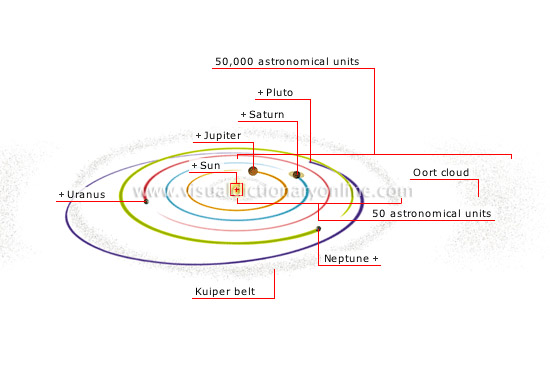outer planets
Planets located beyond the asteroid belt; these are known as the gas giants.
50 astronomical units 
Corresponds to about 50 times the Earth-Sun distance.
Uranus 
Seventh planet from the Sun, also the third largest planet; Uranus is composed mainly of rock, ice and hydrogen and features 11 rings.
Neptune 
Eighth planet from the Sun; its atmosphere, composed of hydrogen, helium and methane, gives Neptune its bluish color. Features four rings.
Kuiper belt 
Circular region of the solar system about 50 astronomical units from the Sun; thought to be a repository of small icy bodies, the source of comets.
Pluto 
Discovered in 1930, it was long considered the ninth planet of the solar system. Since 2008, it has been classified as a plutoid.
Saturn 
Sixth planet from the Sun, also the second largest planet; Saturn is encircled by rings forming a band about 120,000 mi in diameter.
Jupiter 
Fifth planet from the Sun, also the largest; Jupiter is 1,330 times the size of Earth.
Sun 
Star around which the planets gravitate; represents over 99.8% of the total mass of the solar system.
Oort cloud 
Region of space bordering the solar system about 50,000 astronomical units from the Sun; composed of billions of comets.
50,000 astronomical units 
Corresponds to about 50,000 times the Earth-Sun distance.








